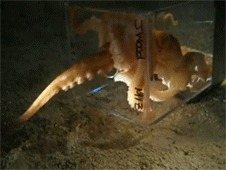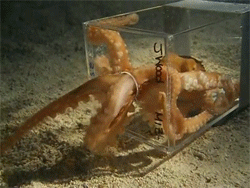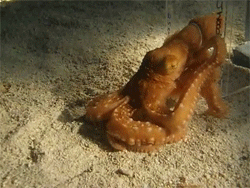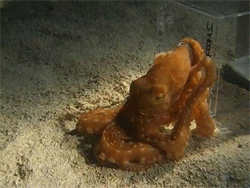Hayao Miyazaki’s Happy New Year Greetings Drawings










Hayao Miyazaki’s Happy New Year Greetings Drawings
Bonus-


More Posts from Philosophical-amoeba and Others

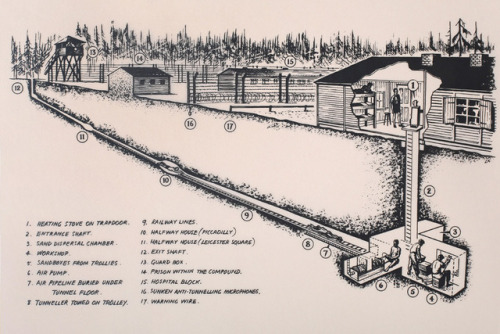
March 24th 1944: The ‘Great Escape’
On this day in 1944, a group of Allied prisoners of war staged a daring escape attempt from the German prisoner of war camp at Stalag Luft III. This camp, located in what is now Poland, held captured Allied pilots mostly from Britain and the United States. In 1943, an Escape Committee under the leadership of Squadron Leader Roger Bushell of the RAF, supervised prisoners surreptitiously digging three 30 foot tunnels out of the camp, which they nicknamed ‘Tom’, ‘Dick’ and ‘Harry’. The tunnels led to woods beyond the camp and were remarkably sophisticated - lined with wood, and equipped with rudimentary ventilation and electric lighting. The successful construction of the tunnels was particularly impressive as the Stalag Luft III camp was designed to make it extremely difficult to tunnel out as the barracks were raised and the area had a sandy subsoil. ‘Tom’ was discovered by the Germans in September 1943, and ‘Dick’ was abandoned to be used as a dirt depository, leaving ‘Harry’ as the prisoners’ only hope. By the time of the escape, American prisoners who had assisted in tunneling had been relocated to a different compound, making the escapeees mostly British and Commonwealth citizens. 200 airmen had planned to make their escape through the ‘Harry’ tunnel, but on the night of March 24th 1944, only 76 managed to escape the camp before they were discovered by the guards. However, only three of the escapees - Norwegians Per Bergsland and Jens Müller and Dutchman Bram van der Stok - found their freedom. The remaining 73 were recaptured, and 50 of them, including Bushell, were executed by the Gestapo on Adolf Hitler’s orders, while the rest were sent to other camps. While the escape was generally a failure, it helped boost morale among prisoners of war, and has become enshrined in popular memory due to its fictionalised depiction in the 1963 film The Great Escape.
“Three bloody deep, bloody long tunnels will be dug – Tom, Dick, and Harry. One will succeed!” - Roger Bushell




Happy Birthday, @smokey-bear (August 9th)!
Everybody loves Smokey the Bear and truthfully what’s not to love? His message of conservation and environmental concern is even more relevant today than it was in 1944 when the campaign was created. In 1952 the Smokey the Bear song was written by Steve Nelson and Jack Rollins and became a grade school standard. Feel free to sing along: here are the lyrics from Living, Learning, Loving West Virginia from the Conservation Commission of West Virginia, 1958. Have fun and remember “Only you can prevent forest fires.”


New CDC Research Debunks Agency’s Assertion That Mercury in Vaccines Is Safe
The CDC study, Alkyl Mercury-Induced Toxicity: Multiple Mechanisms of Action, appeared last month in the journal, Reviews of Environmental Contamination and Toxicology. The 45-page meta-review of relevant science examines the various ways that mercury harms the human body. Its authors, John F. Risher, PhD, and Pamela Tucker, MD, are researchers in the CDC’s Division of Toxicology and Human Health Sciences, Agency for Toxic Substances and Disease Registry.
“This scientific paper is the one of most important pieces of research to come out of the CDC in a decade,” Paul Thomas, M.D., a Dartmouth-trained pediatrician who has been practicing medicine for 30 years, said. “It confirms what so many already suspected: that public health officials have been making a terrible mistake in recommending that we expose babies and pregnant women to this neurotoxin. I regret to say that I gave these shots to children. The CDC led us all to believe that it was perfectly safe.”
Among the findings of the CDC’s new study:
Methylmercury, the highly-regulated neurotoxin found in fish, and ethylmercury (found in medical products, including influenza and tetanus vaccines, ear drops and nasal sprays) are similarly toxic to humans. Methylmercury and ethylmercury share common chemical properties, and both significantly disrupt central nervous system development and function.
Thimerosal is extremely toxic at very low exposures and is more damaging than methylmercury in some studies. For example, ethylmercury is even more destructive to the mitochondria in cells than methylmercury.
The ethylmercury in thimerosal does not leave the body quickly as the CDC once claimed, but is metabolized into highly neurotoxic forms.
IT’S NATIONAL LIBRARY WEEK

HUZZAH! It is National Library Week, bookworms and library cats!!
And that means it is the perfect time of year to show some love to your local (and not local) Libraries, both in person and online. So, just as we took time to make a special post on Follow a Library Day last year, we’ve created ANOTHER master post to honor all the libraries we know so far on tumblr so that you can #followalibrary!!
Check out their tumblrs below and show them some love, bookworms! (Alphabetical by url)
@alachualibrary (The Alachua County Library District)
@alt-library (By Sacramento Public Library)
@aplibrary (Abilene Public Library)
@austinpubliclibrary (Austin Public Library)
@badgerslrc (The Klamath Community College’s Learning Research Center)
@bflteens (Baker Free Library’s Tumblr For Teens)
@bibliosanvalentino (Biblioteca San Valentino [San Valentino Library])
@biodivlibrary (Biodiversity Heritage Library)
@bodleianlibs (Bodleian Libraries)
@boonelibrary (Boone County Public Library)
@brkteenlib (Brookline Public Library Teen Services Department)
@californiastatelibrary (California State Library)
@cheshirelibrary (Cheshire Public Library)
@cityoflondonlibraries (City of London Libraries)
@cmclibraryteen (Cape May County Library’s Teen Services)
@cobblibrary (Cobb County Public Library System)
@cpl-archives (Cleveland Public Library Archives)
@cplsteens (Clearwater Public Library Teens)
@darienlibrary (Darien Library)
@dcpubliclibrary (DC Public Library)
@decaturpubliclibrary (Decatur Public Library)
@delawarelibrary (Delaware County District Library)
@detroitlib (Detroit Public Library Music, Arts & Literature Department)
@douglaslibraryteens (Douglas Library For Teens)
@dplteens (Danville Public Library Teens)
@escondidolibrary (Escondido Public Library)
@fontanalib (Fontana Regional Library)
@fppld-teens (Franklin Park Library Teens)
@friscolibrary (Frisco Public Library)
@gastonlibrary (Gaston County Public Library)
@glendaleteenlibrary (Glendale Public Library Teens)
@hpldreads (Havana Public Library District)
@hpl-teens (Homewood Public Library For Teens)
@kingsbridgelibraryteens (Kingsbridge Library Teens Advisory Group)
@lanelibteens (Lane Memorial Library Teen Services)
@lawrencepubliclibrary (Lawrence Public Library)
@marioncolibraries (Marion County Public Library System)
@mrcplteens (Mansfield/Richland County Public Library Teen Zone)
@myrichlandlibrary (Mansfield/Richland County Public Library)
@necclibrary (Northern Essex Community College Libraries)
@novipubliclibrary (Novi Public Library)
@nplteens (Nashua Public Library Teens)
@orangecountylibrarysystem (Orange County Library System)
@othmeralia (Othmer Library of Chemical History)
@petit-branch-library (Petit Branch Library)
@pflibteens (Pflugerville Public Library Teenspace)
@plainfieldlibrary (Plainfield Public Library District)
@royhartlibrary (RoyHart Community Library)
@safetyharborpubliclibrary (Safety Harbor Library Teen Zone)
@santamonicalibr (Santa Monica Public Library)
@schlowlibrary (Schlow Centre Region Library)
@smithsonianlibraries (Museum Library System)
@smlibrary (Sheppard Memorial Library)
@southeastlibrary (Southeast Branch Library)
@tampabaylibraryconsortium-blog (Tampa Bay Library Consortium)
@teenbookerie (Erie County Public Library For Teens)
@teencenterspl (The Smith Public Library Teen Center)
@teensfvrl (Fraser Valley Regional Library)
@teen-stuff-at-the-library (White Oak Library District)
@therealpasadenapubliclibrary (Pasadena Public Library)
@ucflibrary (University of Central Florida Library)
@uwmspeccoll (University of Wisconsin Milwaukee Libraries Special Collections)
@vculibraries (Virginia Commonwealth University Libraries)
@waynecountyteenzone (Wayne County Public Library’s Teen Space)
@wellingtoncitylibraries (Wellington City Libraries)
@widenerlibrary (Harvard’s Widener Library)
Whew! There’s a LOT of you. :) But we now this list is just getting started! Feel free to keep the library love going by adding any libraries we missed/don’t know of yet! (And if you’re not following US already, well, what better time to start than this week? ;) Eh? Eh?) And, of course, never hesitate to visit your Library in person. We love seeing you! :)
Happy National Library Week, library cats!
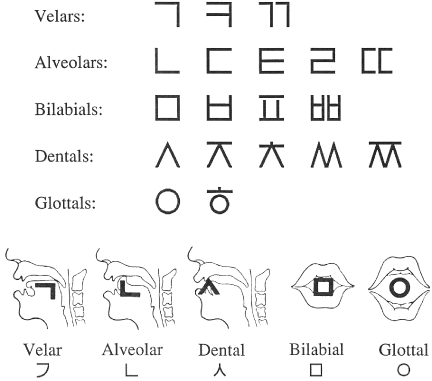
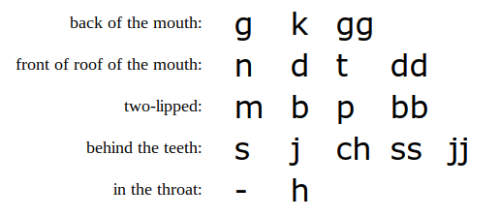
A basic schematic of why the Korean alphabet is so cool, from Wright House:
Unlike almost every other alphabet in the world, the Korean alphabet did not evolve. It was invented in 1443 (promulgated in 1446) by a team of linguists and intellectuals commissioned by King Sejong the Great.
In the diagram [above], the Korean consonants are arranged into five main linguistic groups (one per row), depending on where in the mouth contact is made. Notice that there is a graphic element common to all the consonants in a particular row. The first consonant in each row is the most basic and is graphically the simplest; this representative consonant for each group is the building block for the other characters in that group. Certain of these modifications are systematic, and yield similarly modified characters in several groups, such as adding a horizontal line to a simple consonant (a “stop” consonant–such as t/d or p/b–rather than a nasal consonant) to form the aspirated consonants (those made with extra air) and doubling simple consonants to form “tense” consonants (no real equivalent in English).
Notice that the five representative consonants (the ones in the first column in the upper part of the diagram) are also depicted in the drawings that make up the lower part of the diagram showing the relevant part of the mouth involved. Ingeniously, each of these representative consonants is a kind of simplified schematic diagram showing the position of the mouth in forming those consonants.
More details, including subsequent historical changes to Hangul, in the Wikipedia article.
What’s Up for May 2016?

What’s Up for May? Two huge solar system highlights: Mercury transits the sun and Mars is closer to Earth than it has been in 11 years.

On May 9, wake up early on the west coast or step out for coffee on the east coast to see our smallest planet cross the face of the sun. The transit will also be visible from most of South America, western Africa and western Europe.

A transit occurs when one astronomical body appears to move across the face of another as seen from Earth or from a spacecraft. But be safe! You’ll need to view the sun and Mercury through a solar filter when looking through a telescope or when projecting the image of the solar disk onto a safe surface. Look a little south of the sun’s Equator. It will take about 7 ½ hours for the tiny planet’s disk to cross the sun completely. Since Mercury is so tiny it will appear as a very small round speck, whether it’s seen through a telescope or projected through a solar filter. The next Mercury transit will be Nov. 11, 2019.

Two other May highlights involve Mars. On May 22 Mars opposition occurs. That’s when Mars, Earth and the sun all line up, with Earth directly in the middle.

Eight days later on May 30, Mars and Earth are nearest to each other in their orbits around the sun. Mars is over half a million miles closer to Earth at closest approach than at opposition. But you won’t see much change in the diameter and brightness between these two dates. As Mars comes closer to Earth in its orbit, it appears larger and larger and brighter and brighter.

During this time Mars rises after the sun sets. The best time to see Mars at its brightest is when it is highest in the sky, around midnight in May and a little earlier in June.

Through a telescope you can make out some of the dark features on the planet, some of the lighter features and sometimes polar ice and dust storm-obscured areas showing very little detail.

After close approach, Earth sweeps past Mars quickly. So the planet appears large and bright for only a couple weeks.

But don’t worry if you miss 2016’s close approach. 2018’s will be even better, as Mars’ close approach will be, well, even closer.
You can find out about our #JourneytoMars missions at mars.nasa.gov, and you can learn about all of our missions at http://www.nasa.gov.
Make sure to follow us on Tumblr for your regular dose of space: http://nasa.tumblr.com
-
 pumpkimhead liked this · 5 years ago
pumpkimhead liked this · 5 years ago -
 lawlawc liked this · 5 years ago
lawlawc liked this · 5 years ago -
 worm-on-a-stick liked this · 6 years ago
worm-on-a-stick liked this · 6 years ago -
 tipsy-librarians reblogged this · 6 years ago
tipsy-librarians reblogged this · 6 years ago -
 everythingburritos liked this · 6 years ago
everythingburritos liked this · 6 years ago -
 koh170420014 reblogged this · 6 years ago
koh170420014 reblogged this · 6 years ago -
 superbeeny reblogged this · 6 years ago
superbeeny reblogged this · 6 years ago -
 superbeeny liked this · 6 years ago
superbeeny liked this · 6 years ago -
 omnicogni liked this · 7 years ago
omnicogni liked this · 7 years ago -
 yoursonaposts liked this · 7 years ago
yoursonaposts liked this · 7 years ago -
 astridciruelobutterfly liked this · 7 years ago
astridciruelobutterfly liked this · 7 years ago -
 artemiskaleo liked this · 7 years ago
artemiskaleo liked this · 7 years ago -
 icychick-liu liked this · 7 years ago
icychick-liu liked this · 7 years ago -
 songja-jeong reblogged this · 7 years ago
songja-jeong reblogged this · 7 years ago -
 songja-jeong reblogged this · 7 years ago
songja-jeong reblogged this · 7 years ago -
 daffodil-s liked this · 7 years ago
daffodil-s liked this · 7 years ago -
 fiveyears21 liked this · 8 years ago
fiveyears21 liked this · 8 years ago -
 natuve liked this · 8 years ago
natuve liked this · 8 years ago -
 tombosdeliveryservice liked this · 8 years ago
tombosdeliveryservice liked this · 8 years ago -
 7thcervical liked this · 8 years ago
7thcervical liked this · 8 years ago -
 oceanplaastic-blog liked this · 8 years ago
oceanplaastic-blog liked this · 8 years ago -
 rohan788 liked this · 8 years ago
rohan788 liked this · 8 years ago -
 theimageryarchive reblogged this · 8 years ago
theimageryarchive reblogged this · 8 years ago -
 sicacheeks liked this · 8 years ago
sicacheeks liked this · 8 years ago -
 godstears liked this · 8 years ago
godstears liked this · 8 years ago -
 errolheights liked this · 8 years ago
errolheights liked this · 8 years ago -
 garbageaddict liked this · 8 years ago
garbageaddict liked this · 8 years ago -
 sharklunch liked this · 8 years ago
sharklunch liked this · 8 years ago -
 alwaysdearie reblogged this · 8 years ago
alwaysdearie reblogged this · 8 years ago -
 xwinterbear liked this · 8 years ago
xwinterbear liked this · 8 years ago -
 ozrago liked this · 8 years ago
ozrago liked this · 8 years ago -
 welcome-tothe-emo-parade-blog liked this · 8 years ago
welcome-tothe-emo-parade-blog liked this · 8 years ago -
 kawaii-otaku-luv reblogged this · 8 years ago
kawaii-otaku-luv reblogged this · 8 years ago -
 kawaii-otaku-luv liked this · 8 years ago
kawaii-otaku-luv liked this · 8 years ago -
 amnos1218 liked this · 8 years ago
amnos1218 liked this · 8 years ago -
 marinagoodvibes liked this · 8 years ago
marinagoodvibes liked this · 8 years ago -
 ohreallyman liked this · 8 years ago
ohreallyman liked this · 8 years ago -
 char-kikuchiyo liked this · 8 years ago
char-kikuchiyo liked this · 8 years ago
A reblog of nerdy and quirky stuff that pique my interest.
291 posts






